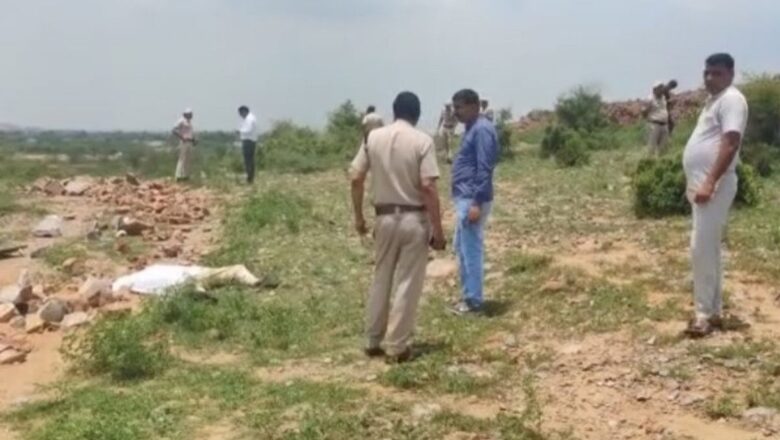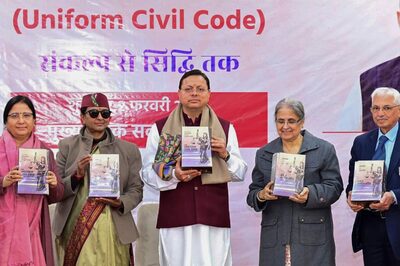
views
Every fifth murder in Bihar last year was due to disagreement over property or land. For three years in a row, the state has recorded the highest number of murders due to property or land disputes. The National Crime Records Bureau (NCRB) data for 2021 released recently shows that of the 1,081 murders that happened due to various disputes in the state, 635 or 59 per cent killings were attributed to property or land-related rows.
Uttar Pradesh with almost double the population of Bihar was a distant second with 227 cases. Maharashtra with 172 cases ranked third. Overall 2,488 cases of murders were motivated by property or land dispute in the country last year, according to the NCRB numbers.
Bihar recorded a total of 2,799 overall murder cases, i.e., every fifth killing in the state happened over land or property dispute.
A closer look at previous few years’ NCRB data shows a similar trend of murders in Bihar when it comes to disputes over land or property. In 2020, 2019, 2018, and 2017, property or land-related disputes resulted in 815, 782, 1,016, and 939 killings respectively.

So, why has Bihar acquired such a dubious distinction when it comes to land and property-related crimes? The reasons are diverse, experts say, from the state’s social dynamics to its economic backwardness, and further its flood-prone geography.
“Even after three decades of economic reforms, land remains a prime moving factor in Bihar’s economy. People are mostly engaged in agriculture and structural transformation from farm to non-farm sectors has been limited only to low-level services,” says Dr Ajit Jha, Assistant Professor, Institute for Studies in Industrial Development (ISID), a policy think tank sponsored by the Government of India, New Delhi.
“The present society is not operating under the joint family arrangement in the state. The eventual outcome of this is the division of assets. Land is a precious asset for the Bihari community. It also relates to their sense of social identity. So, family members, neighbours fight over land. Family members that are struggling financially want a higher share of family land. All of this leads to conflict within families and in society,” argues Dr Aviral Pandey, Assistant Professor at AN Sinha Institute of Social Studies, Patna.
Pandey goes on to quote an example to back the argument. “Recently, land mafia in Darbhanga allegedly attempted to burn three members of a family alive. The matter was related to a land dispute among relatives,” Pandey says.
Bihar is dominantly a rural state. According to the 2011 census, over 88 per cent of the state’s population resides in the hinterlands. But now there is a rapid urge to move to cities and become part of India’s growth story.
“The reality is that everyone wants to purchase a plot of land or apartment in cities or towns. As a result, the price of land is rising daily in urban areas. Due to this, there are disputes and issues involving land in urban areas,” Dr Pandey further adds, attributing land disputes to urbanisation push. “In the state, there is no significant plan for housing in villages and urban areas (including in capital Patna). Even though there is unclear space for a road or walkway, people nonetheless construct their homes. If other people use the same tactic, this also causes problems. People battle over connected roads and paths.”
During Acharya Vinoba Bhave’s Bhoodan campaign in the 1950s, around 6.49 lakh acres of land was received in Bihar.
However, as late as in October 2017, the Bihar government had to set up a three-member body to probe Bhoodan land irregularities. “Distribution of land has also been skewed in favour of some dominant castes in Bihar. The poor implementation of land reforms policies has also aggravated the problem of unsettled land rights,” Dr Jha adds.
The slow pace of justice in civil matters including disputes over land titles, inheritance, landholdings, and transfers further lead to frustration among disputing parties.
According to ‘Access To Justice Survey, 2016’ conducted by research think tank Daksh, 66.2 per cent of all civil cases in India are related to land or property disputes. Besides, 25 per cent of all cases decided by the Supreme Court involve land disputes, according to the Centre for Policy Research.
These cases linger on for decades in lower courts. In May this year, a district court in Bihar’s Ara gave its judgement in a land dispute case that began in 1914, i.e., it took 108 years for just the lower court to decide the case.
“Such legal delays create frustration and litigants sometimes decide to take law into their own hands. Legal deferrals also sometimes create law and order situations,” says Dr Ajit Jha.
“There is no social movement against problems related to land. The legal process moves very slowly, and poor people are very weak (due to high expenditure and time-taking procedures) to take support of the legal system. The administrative process is overly bureaucratic. There is a nexus between officials, rich class, land mafia, and powerful people,” adds Dr Aviral Pandey.
Besides, the changing courses of Himalayan rivers in the northern part of the state have also led to land disputes. Every year, rivers like Ganga, Kosi, Kamala, and Gandak change their paths, submerging land and giving it back after a few years. The conflicting claims over land ownership sometimes turn bloody.
It’s not that the state government is ignorant of the prevailing situation, and accordingly, it has initiated a series of progressive steps to address the vexing issue.
A special survey for updating land records is currently underway and is expected to be completed by the end of March 2024. The state has also pioneered the concept of dynamic land record maps which will modify with the change in land ownership.
Further, recognising the absence of land record mutation as one of the prime reasons behind disputes, the state assembly passed the Bihar Land Mutation Amendment Bill, 2021, making mutation of land maps mandatory. Under the Bihar Land Disputes Redressal Act, 2009, Deputy Collector Land Reforms (DCLR) have been given the power of a civil court and are empowered to adjudicate land disputes.
“Online land records will make things better. Process has already begun. This will lessen land-related disputes in the years to come. But the online survey’s pace is incredibly slow. Similar to an election, the government should prioritise this matter and complete online mapping as quickly as possible,” suggests Dr Pandey.
The opaqueness in the land registry system is sometimes misused by middlemen to sell the same piece of land to multiple parties.
“Land has not yet been connected to Aadhaar number,” says Pandey. “Since land is a source of wealth, it should be linked with Aadhaar.”
Read all the Latest News India and Breaking News here




















Comments
0 comment